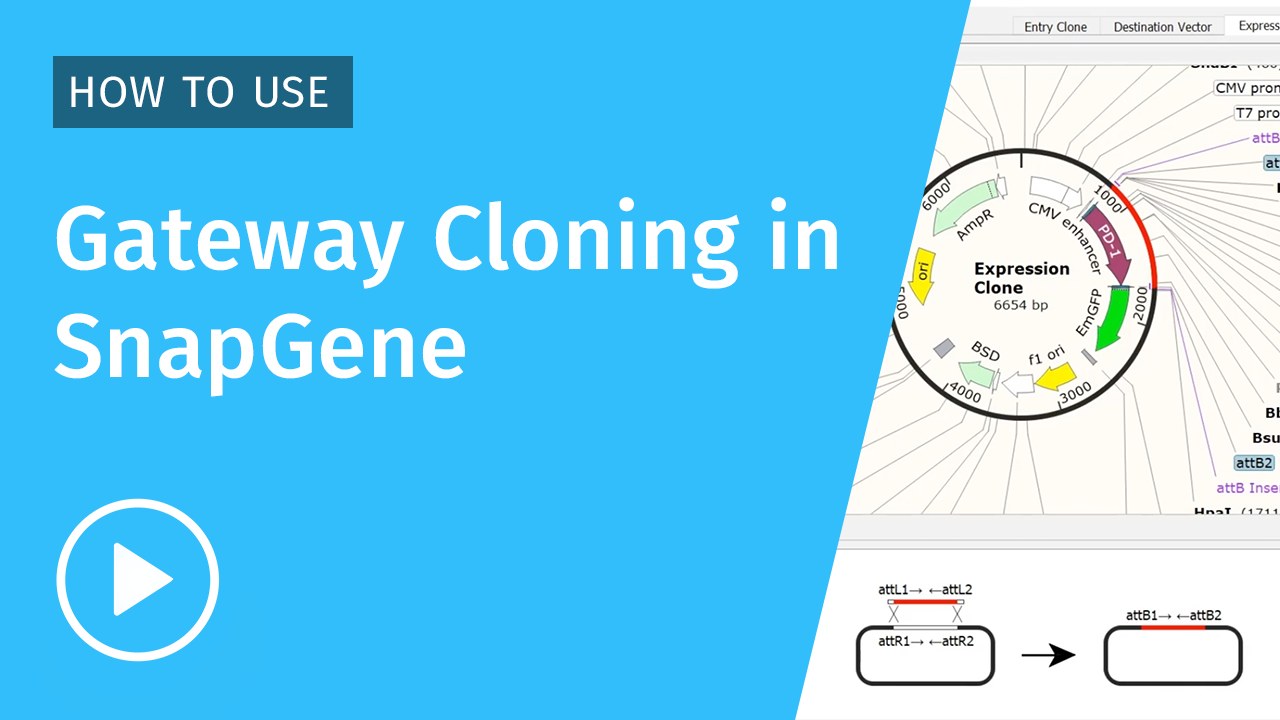Course Content
Introduction to Gateway Cloning
INSIDE THE VIDEO
The Gateway cloning method, developed by Invitrogen in the 1990s, uses the site-specific recombination machinery of phage lambda to integrate its genome into E. Coli.
LENGTH
4 Minutes
A Detailed Look at Gateway Cloning
INSIDE THE VIDEO
Take a detailed look at ThermoFisher's proprietary system Gateway cloning. Learn how the 2-step BP and LR reactions work to make Gateway cloning an effective cloning technique.
LENGTH
6 Minutes
Gateway Cloning Pros and Cons
INSIDE THE VIDEO
In this video, we discuss the relative pros and cons of Gateway Cloning. Pros include its speed, high throughput and the ability to combine multiple fragments in one reaction.
LENGTH
4 Minutes
Tips for Gateway Cloning
INSIDE THE VIDEO
Now that you're familiar with the technique of Gateway Cloning take your learning further with these 5 tips for carrying out successful cloning experiments in the lab.
LENGTH
5 Minutes
Learn More About SnapGene

VIDEO SERIESGateway Cloning
Learn all the steps needed to simulate single or multisite Gateway Cloning in SnapGene.

GUIDEIntroduction to SnapGene
If you're new to SnapGene this brief guide will help you get started.

VIDEO SERIESGet Started with SnapGene
Learning how to use SnapGene is easy! We developed a few short tutorial videos to guide you through the process.

GUIDEGateway Cloning Technique
An overview of Thermo Fisher's Gateway Cloning technique and how to simulate the Gateway reaction in SnapGene.
Discover the most user-friendly molecular biology experience.

